Membership has its benefits. This month’s Bay Island Bonsai meeting featured a critique from Akio Kondo, a Kokufu prize-winning bonsai artist from Japan.
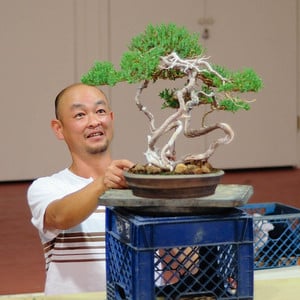
Kondo sizing up a procumbens juniper by Peter Tea
Kondo first visited California in 1996 to practice bonsai for a year after completing his apprenticeship to Kihachiro Kamiya at Kihachi-en. Kondo offered an intriguing look at the world of professional bonsai by traveling around California doing demonstrations for bonsai clubs and working on private collections. The trip was an inspiration to many, including his host for most of the year, Boon Manakitivipart. Boon learned a lot from Kondo during the visit and cemented a friendship that led, eventually, to Boon’s study with Kamiya at Kihachi-en.
Much to our good fortune, Kondo returned to California this summer to help us with our bonsai. Here are a few of the trees Kondo talked about at the meeting.
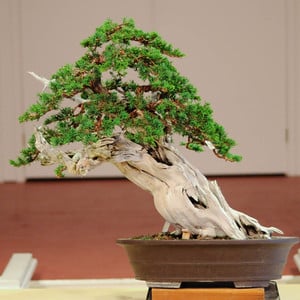
Shimpaku by Jim Gremel
Many branches originate from the same location near the center of the foliage. Kondo recommended removing a few of these branches when the branches above lengthen enough to fill the resulting gap.
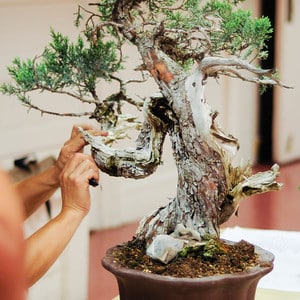
Sierra juniper
Kondo confirmed the front of this tree and made recommendations for the pot (larger, oval) and future branch location. Kondo also revealed a bias toward shimpaku foliage. It is likely, however, that the tree will retain its natural foliage.
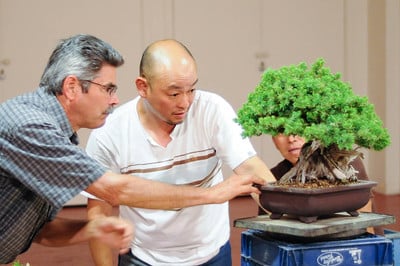
Kondo evaluating Rick’s outstanding shore juniper
This garden tree turned bonsai reveals the potential of the trees in our – or our neighbor’s – backyards. It has developed quickly as a bonsai.
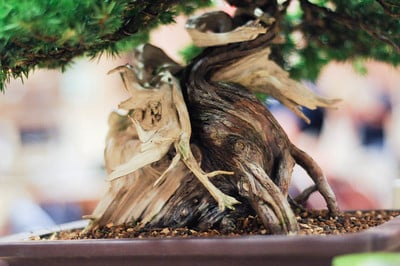
Shore juniper – trunk detail
Kondo contrasted the growth habits of shore juniper with tosho (needle juniper). As shore juniper doesn’t bud back as easily as tosho, care must be taken during cutback to prevent losing branches. Kondo also suggested converting the roots that separate from the trunk above the soil (see above) to jin providing the tree has enough other roots to keep the tree alive.
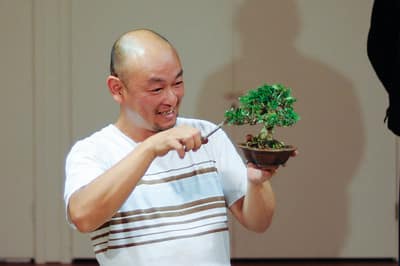
Kondo zooming in on a shohin olive bonsai
Kondo made a surprising number of cuts on this small olive. Although the shape is well established, Kondo further refined the buds to ensure the usefulness of new growth.
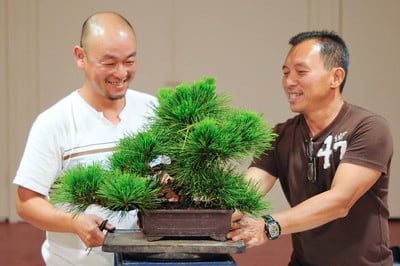
Another serious moment between Kondo and Boon
This is another of my 15 year old black pines. When it was 2 years old I grafted cork bark foliage to the base of the trunk. The foliage came from a yatsabusa corkbark black pine – a somewhat uncommon variety that throws off very compact new buds. For the most part, the tree grew freely for 15 years and was now primed for its first significant haircut.
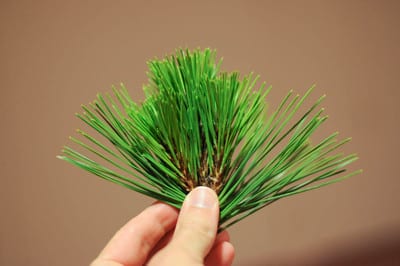
Yatsabusa corkbark black pine foliage
Kondo grabbed a tweezer in his right hand and a scissor in his left and immediately went to work on the tree at breakneck pace. For eight minutes Kondo cut and plucked every last needle and branch that didn’t belong. We gathered close to watch him work – I was particularly impressed by how carefully he was working. Whichever tool Kondo wasn’t using was holding needles away from where he was working. Before we knew it the tree had a more sensible shape and the foliage was evenly dispersed from the bottom branches to the top.
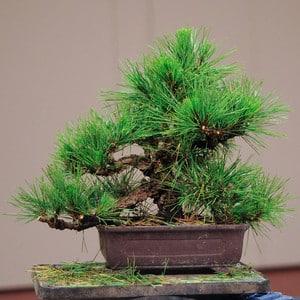
Corkbark black pine after thining
A few months ago Kondo sold his bonsai nursery. Without a storefront to keep open, Kondo is now far more free to travel across Japan to work on trees than he has been for years. This will give him more time to work with better trees, and just maybe, more time to visit us out in California.
Subscribe to Bonsai Tonight
New Posts Delivered Every Tuesday and Friday
AlexV says
Good stuff Jonas. I am very sorry I missed that meeting, it sounds great.
Alex